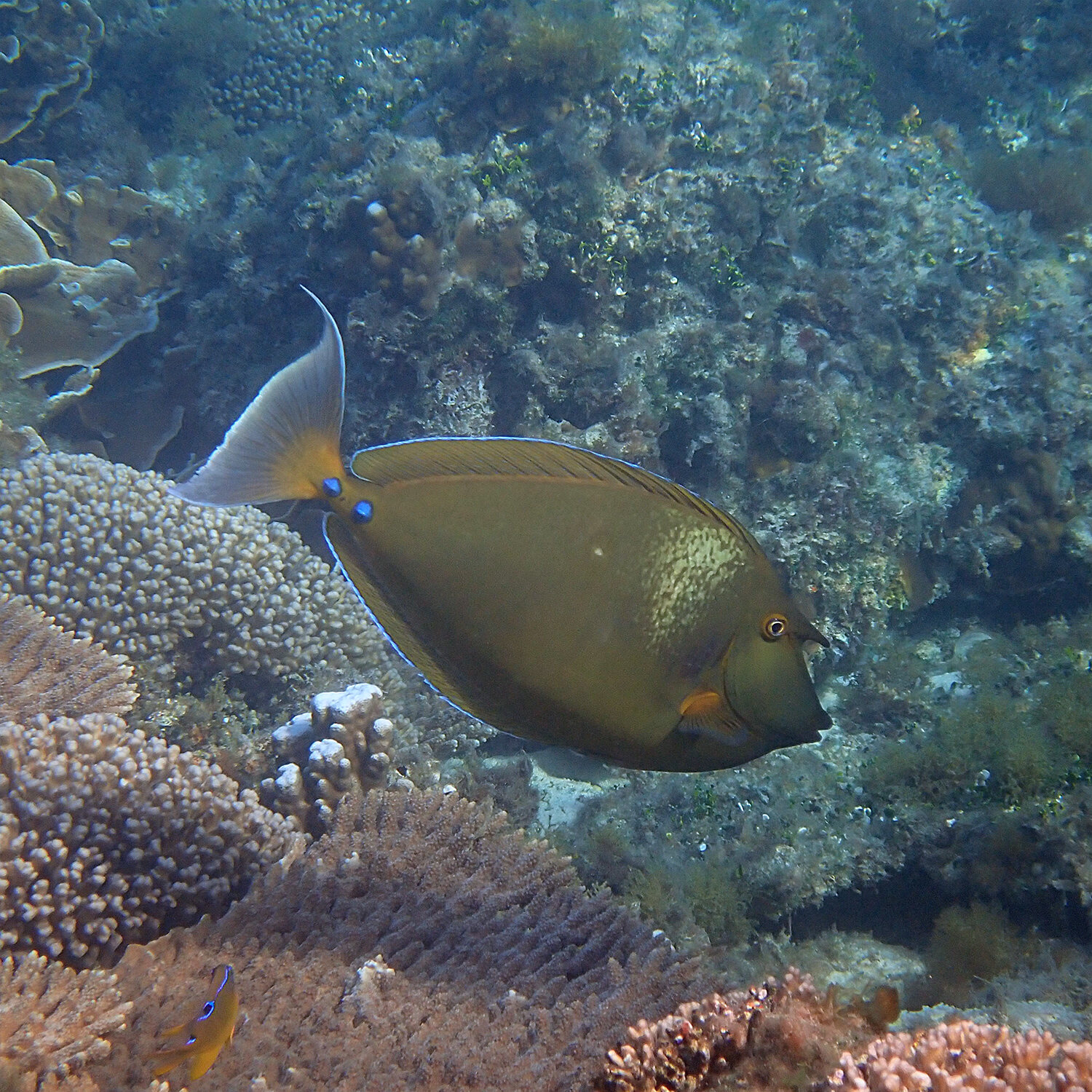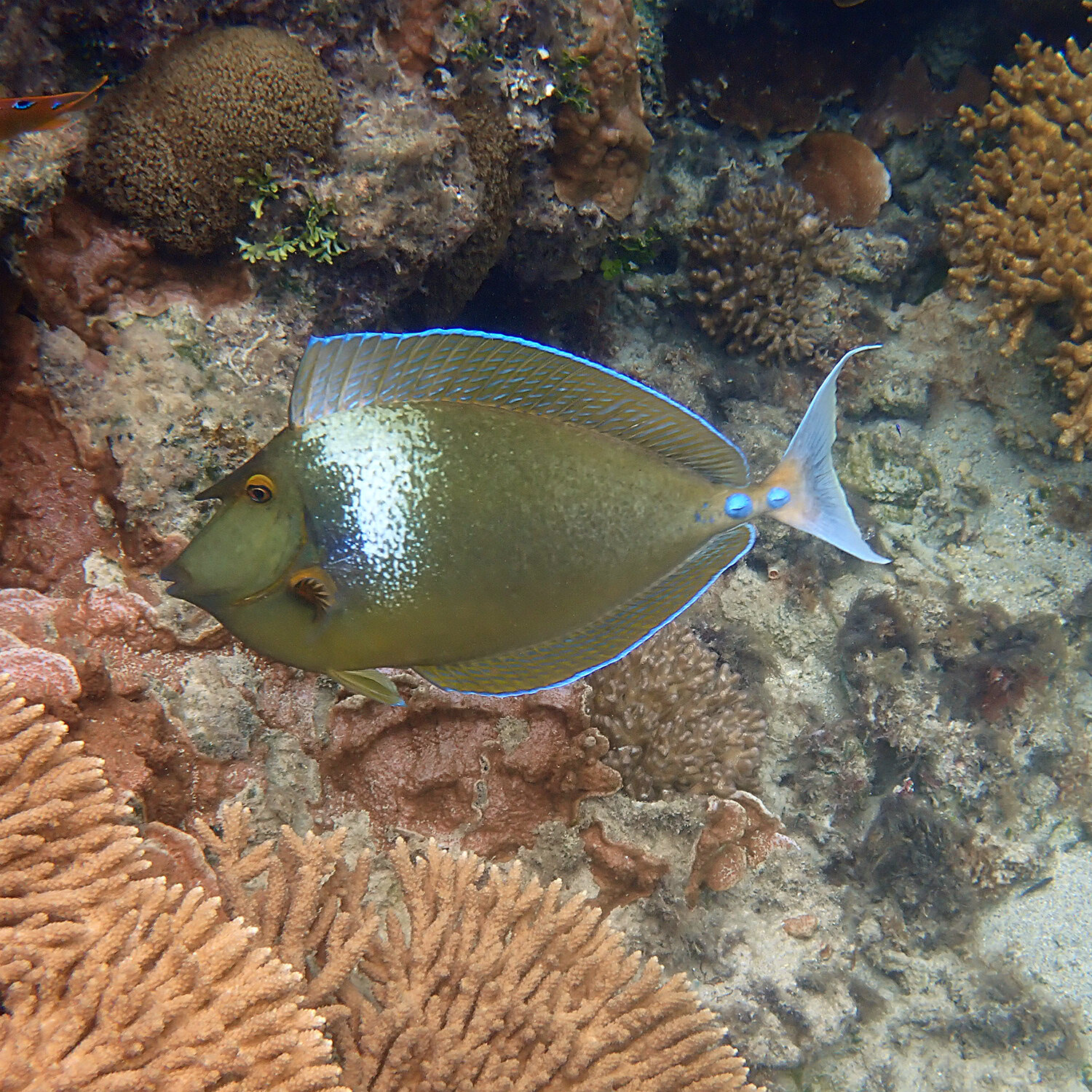One of the many characterful fish in the Emily and Slaughter Bay environs are the bluespine unicornfish, more properly known as Naso unicornis. They belong to the family Acanthuridae, which includes surgeonfishes, tangs and unicornfishes. These fish all have a distinctive characteristic, but more on that later.
They are distributed widely throughout the Indo-Pacific region, probably because their pelagic eggs float freely on the currents in the water column.
These guys love to pose for the camera, showing off their best side, and then shifting so you can get a shot of the other. They also like to peek at you over the coral. I love them to bits and get a real thrill from quietly watching their antics.
Here’s a few vital stats about these charismatic guys.
The caudal peduncles are razor sharp daggers
They are called unicornfish because of the horn-like appendage between their eyes known as a rostral protuberance. No one is really sure what these ‘horns’ are for, but it certainly isn’t for fighting.
They are not generally aggressive, but if they do need to assert themselves they have two pairs of razor-sharp scalpels, or peduncles, near their tails – this is the characteristic they share with surgenofishes and tangs that I mentioned above, and the reason why surgeonfish have that name. They look just like two dots when you first see them, but look closely and you will notice that these modified scales are like tiny daggers. They have not been shown to be venomous in unicornfish.
When they are angry they will darken in colour. When they are mating, the males will flash intense colours. And when they are feeding their colour will subtly change to match their environment.
Importantly – and particularly as juveniles – they are herbivores. As in, they eat plants. And that is a Good Thing. As they get older they will eat plankton found in the water column as well. Leave them be and they will quietly munch the algae that can cover, and even smother, corals, allowing coral larvae to settle and create new coral colonies. So don’t fish for them!
Their skin is particularly tough. This is because they have modified scales that allow for greater speed by reducing the water turbulence as they swim. The Hawaiians used the skins of these fish to make their drums.
The males are generally slightly larger, have larger caudal peduncles, and longer caudal filaments on their tails. The bluespine unicornfish can grow up to about 70 cm in size over the course of its lifespan.
And, amazingly they can live for as long as 55 years. That look they are giving you is one of a wise old fish just sizing you up!
Addendum:
We have at least three beautiful adult unicornfish resident in our lagoons that I am aware of. There could be more. And just recently I discovered a new addition to the fam. Meet the latest member of the unicorn club! He (or maybe she) has that same haughtly but curious way of looking at you. Just beautiful!
A baby (juvenile) bluespine unicornfish, photographed on 11 May 2021.







